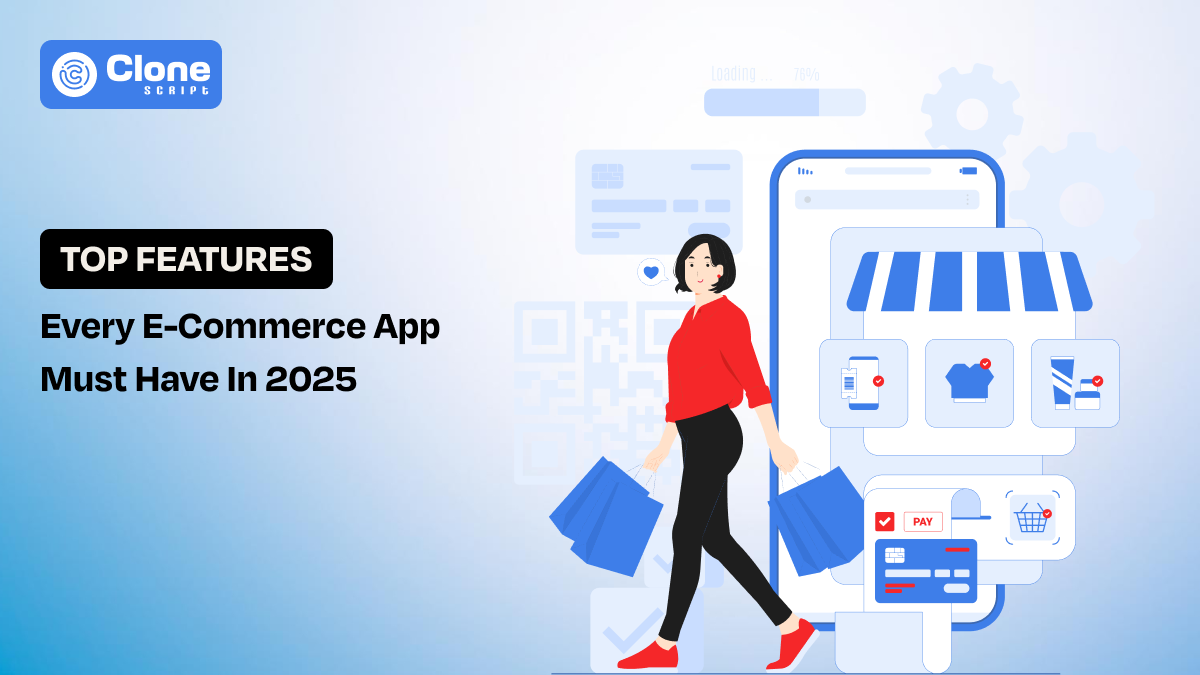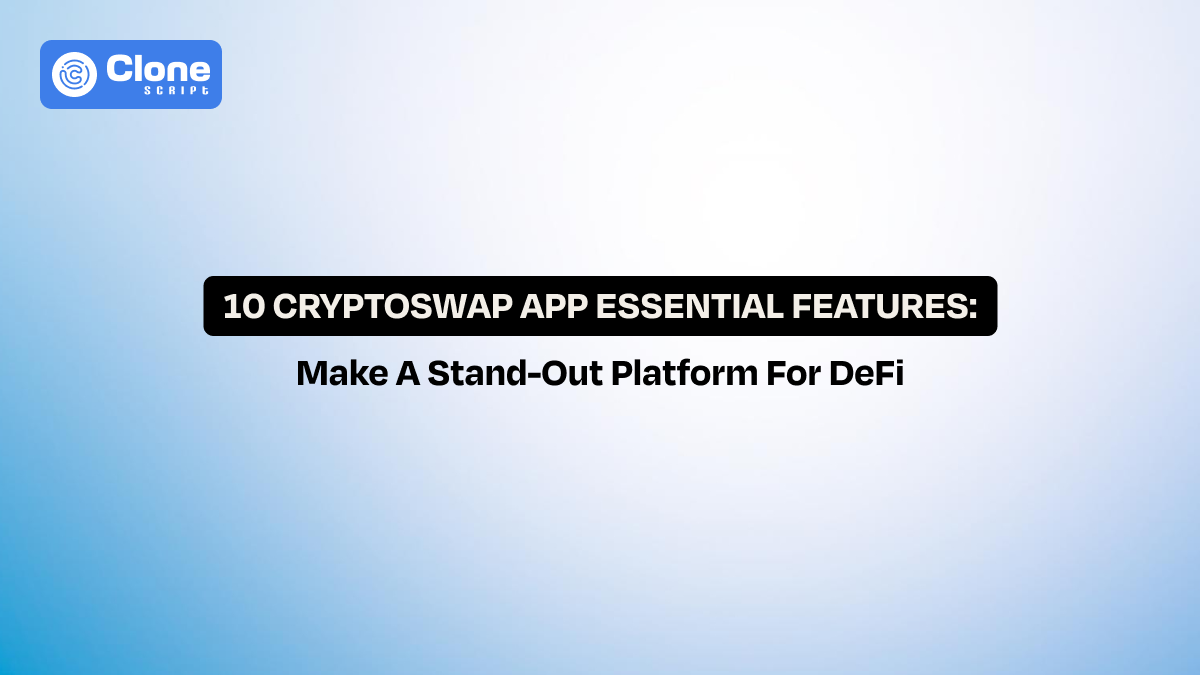Top Advanced Features Every E-Commerce App Must Have in 2025
Five years ago, launching an e-commerce app meant choosing a template, adding a cart, plugging in payments, and calling it a day. Fast forward to 2025, and the rules have completely changed.
Today’s shoppers don’t tolerate frustration. They expect instant results, hyper-personalization, and experiences that mirror the best of physical retail, only faster and smarter. If your app doesn’t deliver that? It’s deleted within minutes.
Mobile commerce is no longer “optional” or even “important.” It’s the frontline of online retail.
The question is no longer “Should I build an app?”
It’s “What exactly should my app be capable of?”
In this guide, we’re looking at the e-commerce app features that matter in 2025. These are the must-have features for modern e-commerce apps, the ones that drive conversions, boost loyalty, and separate the leaders from the rest.
Let’s get into it.
1. A Clean, Personalized, and Effortless Interface
App User interface (UI) and experience (UX) aren’t just design terms. They’re the lens through which your customer sees your brand. And in 2025, that lens must be crisp, intuitive, and smart enough to adapt to each user.
Think of it this way: your app’s interface is your digital storefront. Would you walk into a physical store with confusing aisles, poor lighting, and no signage? Exactly.
What the best e-commerce apps are doing:
-
Using AI to adapt layouts in real time to show the most relevant categories and deals based on the user’s habits.
-
Providing clean, minimalist design with only what’s needed, nothing more, nothing less.
-
Ensuring responsive behavior across all screen types, including foldables and tablets.
-
Supporting dark mode, voice navigation, and gesture-based interactions.
This isn’t just about aesthetics. A seamless UI keeps users engaged longer, and every extra second increases your chances of conversion.
2. Smart Search: Voice, Visuals, and Filters That Think Like Shoppers
AI in customer experience is a key element in any successful business. Why? Because customers are familiar with and do not support it, it results in the loss of the brand.
When someone opens your app, they already know what they want, or they want help finding it. That’s where advanced search features come in.
Typing is optional in 2025. Your users might speak search, upload a photo, or expect the app to just “get” what they’re looking for.
What’s essential:
-
Voice search that understands natural phrases like “affordable women’s running shoes” or “black jacket for winter trips.”
-
Visual search, where users upload a picture or scan an item in real life, and the app instantly finds similar products.
-
AI-enhanced filters that go deeper than just size and color. They think “minimalist,” “sustainable,” or “best for gifting.”
These app features for e-commerce cut down the time to find the relevant products and make your catalog feel accessible and intuitive. Users get to the product faster, with fewer taps, and that’s half the battle.
3. Fast, Flexible, and Frictionless Checkout
It doesn’t matter how beautiful your app is or how many features it has. If the checkout is clunky, users will drop off.
Abandoned carts are still one of the biggest pain points in mobile commerce. And more often than not, the issue is the checkout flow itself.
Here’s what modern checkout looks like in 2025:
-
One-tap checkout with saved addresses, cards, and preferences.
-
Multiple payment options: cards, UPI, PayPal, wallets, BNPL services like Klarna, and even crypto.
-
Guest checkout for first-time users who don’t want to register yet.
-
Real-time verification (e.g., autofill, OTP confirmation) that feels secure but not annoying.
For developers, this is where secure payment in e-commerce apps intersects. Users want both peace of mind and speed. If your app delivers both, you’re ahead.
4. Personalization That Feels Human—Backed by AI
If your e-commerce app shows the same home screen to every user, you’re doing it wrong.
2025 shoppers expect their app experience to be as personalized as their social feeds. They want to understand their preferences, budget, style, and timing.
In addition, Augmented Reality (AR) is also important to make the online shopping experience truly commendable and smooth. Especially for products like furniture, gym equipment, and interior designs, the AR-integrated e-commerce app works as a key element for conversions.
Strong personalization includes:
-
Custom product recommendations based on past views, purchases, and seasonal trends.
-
Dynamic categories and banners that change based on location, time of day, or current events.
-
Bundled offers (e.g., “complete your look” or “frequently bought together”) are tailored to each user.
-
Behavior-based push alerts are not generic sales, but “Your favorite hoodie is back in stock” or “You left your cart with 2 items.”
-
AR integrations allow customers to check that the products can fit their homes, offices, and any premises before ordering them.
AI-powered personalization is one of the most essential AI features in e-commerce mobile apps today. It makes the app feel smarter and makes the customer feel seen.
6. Smart Customer Engagement: Live Chat & Push Notifications
In 2025, e-commerce apps must offer real-time support and timely engagement. Users expect immediate answers, and AI-powered chatbots now handle most queries, from order tracking to return requests and product information, instantly. For complex issues, live agents step in seamlessly, without disrupting the user experience.
Meanwhile, personalized push notifications guide users back at the right time. These alerts are no longer common; they’re AI-driven and behavior-based.
Let’s say you’re making a wine e-commerce app: Including the following techniques improves the order rate:
-
“The wines you liked are back in stock.”
-
“Your cart’s waiting—checkout now for 10% off.”
-
“Flash deal: 30 minutes left for same-day delivery.”
Together, live chat and smart push notifications act as a digital support team and sales assistant. When thoughtfully implemented, they reduce time to order products, boost engagement, and build trust, an essential for wine e-commerce app features.
7. Verified Reviews and Social Sharing That Build Trust
In 2025, building trust goes beyond product quality. It’s about creating transparency and authenticity within your app. Verified reviews and seamless social sharing are now must-have features in any e-commerce experience.
Here’s what matters:
-
Verified buyer badges that confirm the review comes from someone who actually purchased the product. This boosts trust instantly.
-
Photo and video review uploads allow customers to show real-world use and appearance, reducing doubts for future buyers.
-
In-app review prompts are triggered after delivery to encourage feedback while the experience is still fresh.
-
Social sharing buttons for wishlists, purchases, and lookbooks, turning satisfied customers into promoters with one tap.
-
Review filters and highlights, helping users quickly find the most helpful or relevant content.
These features work together to create credibility, community, and conversion. Shoppers trust other shoppers, and your app should make it easy for them to connect.
9. Real-Time Order Tracking & Wishlist Features
After a successful payment and order booking, customers need to track it easily in the app. So, having a tracking feature will create trust and give them peace of mind that their order will be delivered through the updates.
Real-time order tracking can help:
-
Live tracking updates show package location, estimated delivery time, and current status (e.g., “out for delivery”).
-
Push alerts notify users of each stage: confirmed, packed, shipped, out for delivery, and delivered.
-
In-app map views give visual reassurance without requiring users to visit courier websites.
-
Builds trust and reduces “Where’s my order?” support requests.
Wishlist is not just a function, but it’s a bucket list where customers are collecting their favorite products, but have not finalized their purchase.
Wishlist features do:
-
Save-for-later options that keep users’ interests alive, even if they don’t buy immediately.
-
Low-stock and price drop alerts that re-engage users at the right time.
-
Shareable wishlists that encourage gift-giving or social shopping.
Together, these e-commerce app features boost conversions, reduce uncertainty, and increase engagement.
10. Omnichannel & Headless Commerce Readiness
In 2025, e-commerce is no longer confined to a single channel. Buyers interact with your brand across websites, mobile apps, smart devices, social platforms, and even physical locations.
That’s why modern e-commerce app development must use omnichannel consistency and headless flexibility.
Omnichannel capabilities are as follows:
-
Consistent shopping experience across all platforms. Users can start browsing on desktop, continue on mobile, and complete checkout in-app without losing progress.
-
Real-time syncing of user data, wishlists, and shopping carts, so experiences remain seamless.
-
Integrated loyalty programs, promo codes, and user preferences across app, email, SMS, and social touchpoints.
-
Supports click-and-collect or buy-online, pick-up-in-store (BOPIS), blending digital with physical retail.
Headless commerce readiness available with:
-
Frontend freedom: Design a unique website UI/UX tailored for mobile without backend limitations.
-
Faster deployment cycles, enabling brands to iterate on features without overhauling entire systems.
-
Easy integrations with AI engines, personalization APIs, and emerging platforms like voice shopping or AR/VR interfaces.
By separating logic from presentation, headless commerce makes your app future-ready, while omnichannel maintains users' staying connected wherever they go. Both are must-have features for modern e-commerce apps competing in a multi-device world.
Conclusion
The difference between a good e-commerce app and a great one in 2025 isn’t about how many features it has. It’s about how thoughtfully those features are built and how well they serve real user needs.
People expect more than just transactions. They want clarity, speed, trust, and relevance. They want to be understood, whether that’s through a personalized homepage, live order updates, or help that actually helps. They want tools that work without too much intervention, no matter what device they’re on or where they’re shopping from.
Every feature we’ve covered, from modern designs to channel integration, isn’t just about ticking boxes. It’s about creating a shopping experience that feels modern, human, and genuinely useful.
If you’re building or improving an e-commerce app right now, start with empathy. Think like your customer. Build like their time matters. Because in a space where competition is high and loyalty is rare, the app that feels most human is the one users keep coming back to.
FAQs
- How can I make my e-commerce app more user-friendly?
To improve usability, focus on intuitive navigation, fast loading speeds, simple checkout processes, and easy access to product details. A clean, responsive design and personalization options will also enhance the user experience.
- How do I improve the checkout experience for my customers?
Streamline the checkout process by offering guest checkout, multiple payment options (credit cards, mobile wallets), auto-fill features, and an easy-to-understand layout. The faster and simpler the process, the better.
- What are the best payment options to offer in an e-commerce app?
Support a variety of payment methods, including credit/debit cards, PayPal, mobile wallets (Apple Pay, Google Pay), and even newer methods like cryptocurrency. Make sure all transactions are secure with SSL encryption.
- How can e-commerce apps enhance product pages?
Product pages should include high-quality images, 360-degree views, detailed descriptions, customer reviews, and real-time availability. Adding videos or AR features to visualize the product in a customer’s space can also boost engagement.
- How do I personalize the shopping experience for users?
Leverage data to offer personalized product recommendations, targeted ads, and exclusive offers. AI can help predict what users are most likely to buy based on browsing history and past purchases.
- How important is mobile optimization for e-commerce apps?
Mobile optimization is critical as a significant portion of e-commerce traffic comes from mobile devices. Ensure your app is fast, responsive, and easy to navigate on smartphones and tablets to retain users.
 BTC - Bitcoin
BTC - Bitcoin
 USDTERC20 - USDT ERC20
USDTERC20 - USDT ERC20
 ETH - Ethereum
ETH - Ethereum
 BNB - Binance
BNB - Binance
 BCH - Bitcoin Cash
BCH - Bitcoin Cash
 DOGE - Dogecoin
DOGE - Dogecoin
 TRX - TRON
TRX - TRON
 USDTTRC20 - USD TRC20
USDTTRC20 - USD TRC20
 LTC - LiteCoin
LTC - LiteCoin







